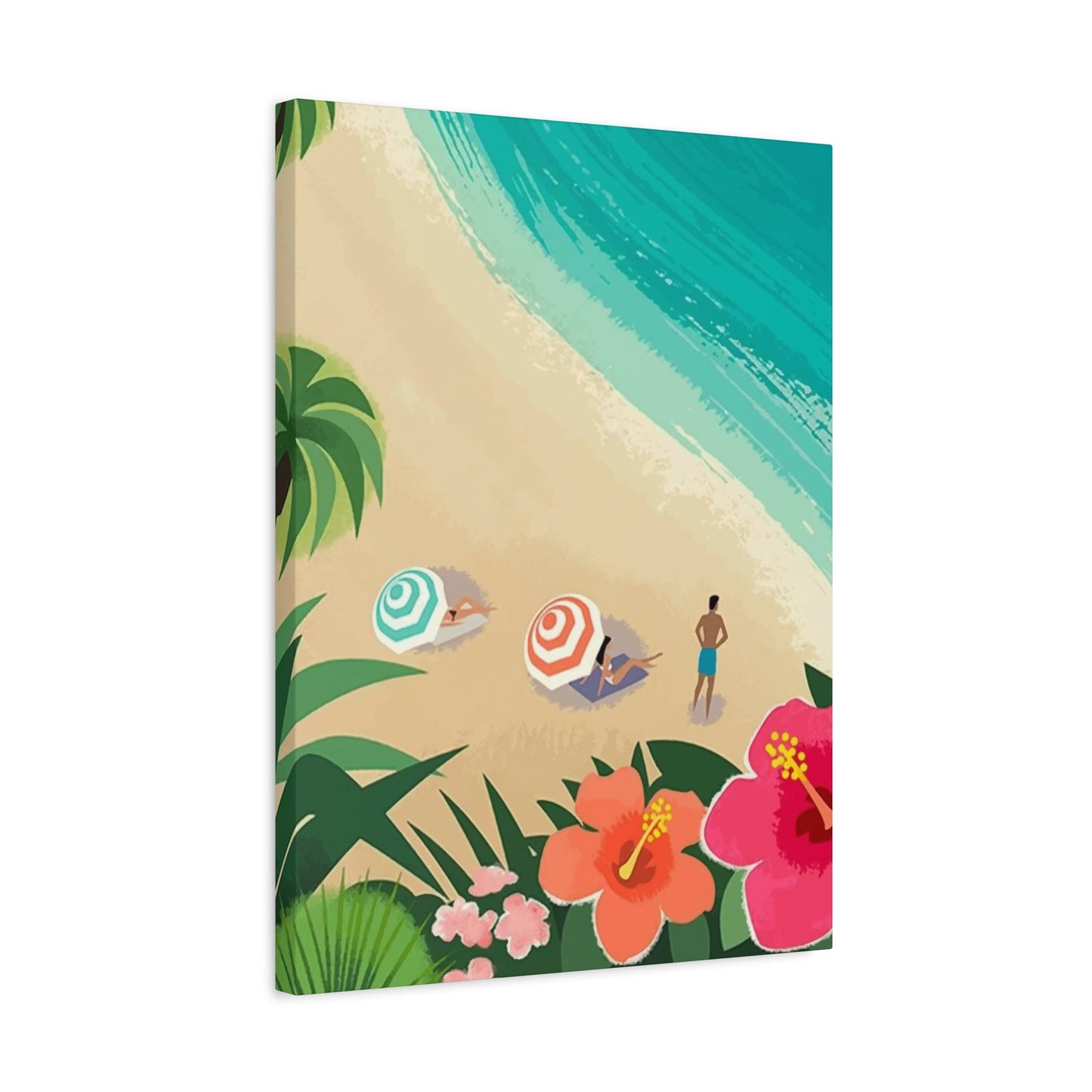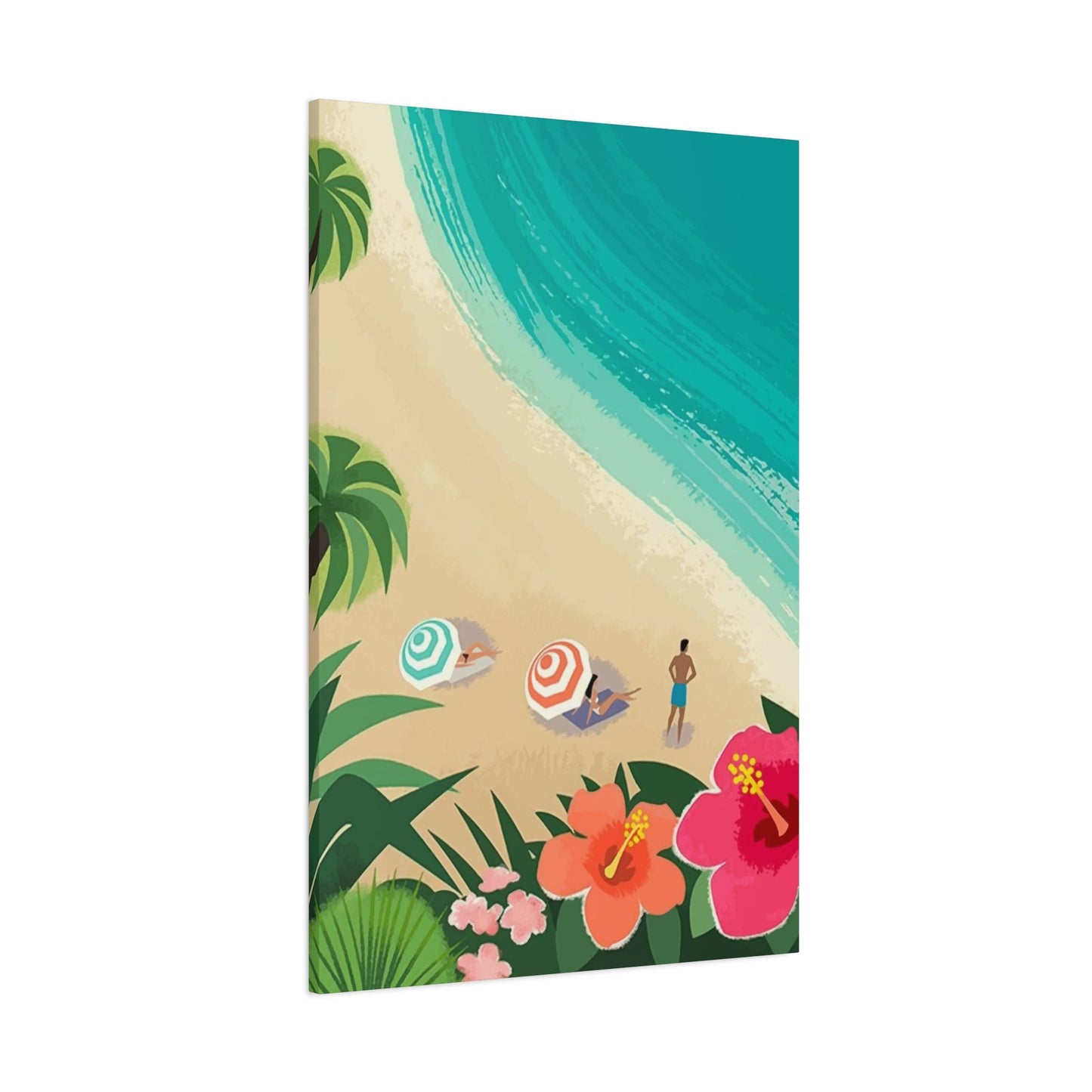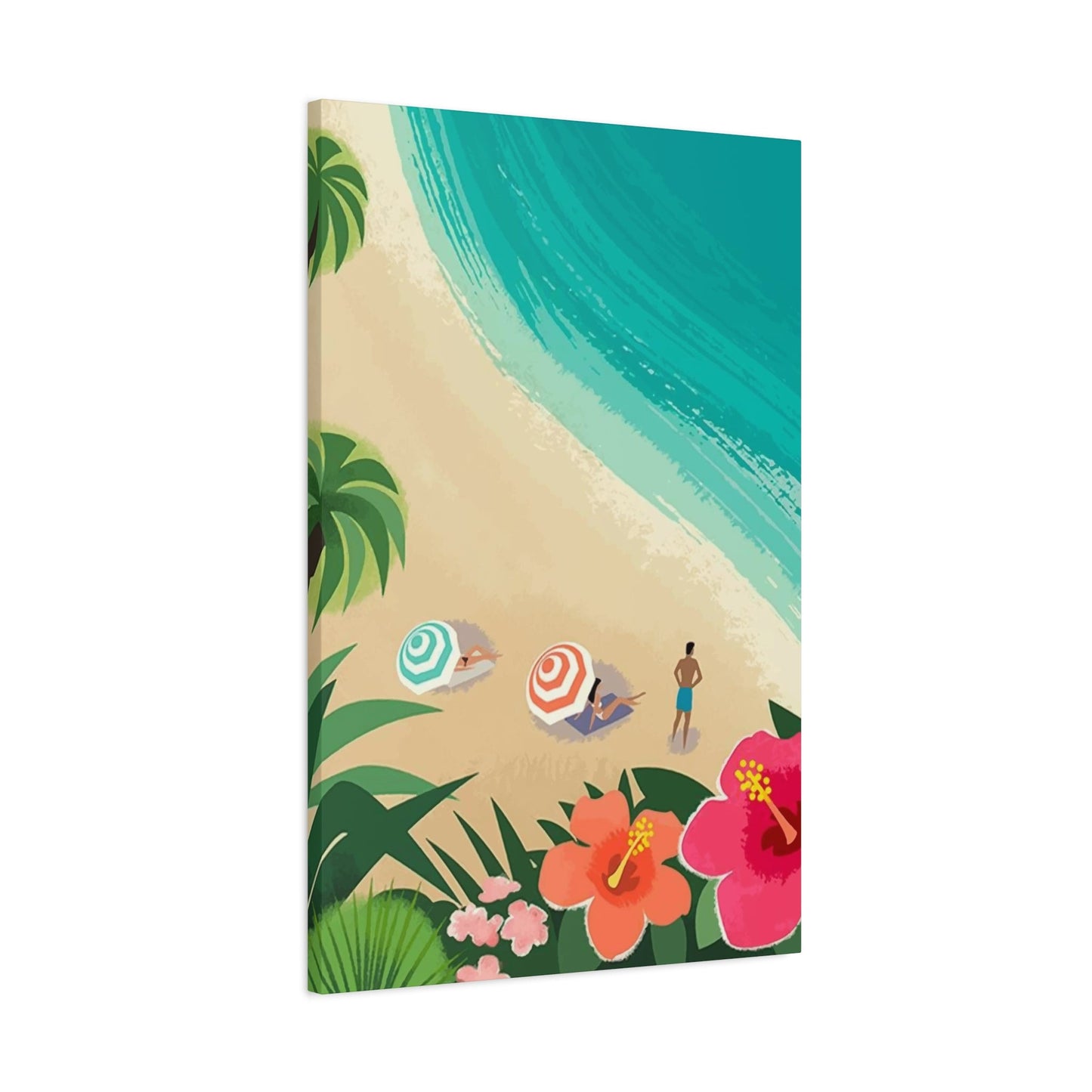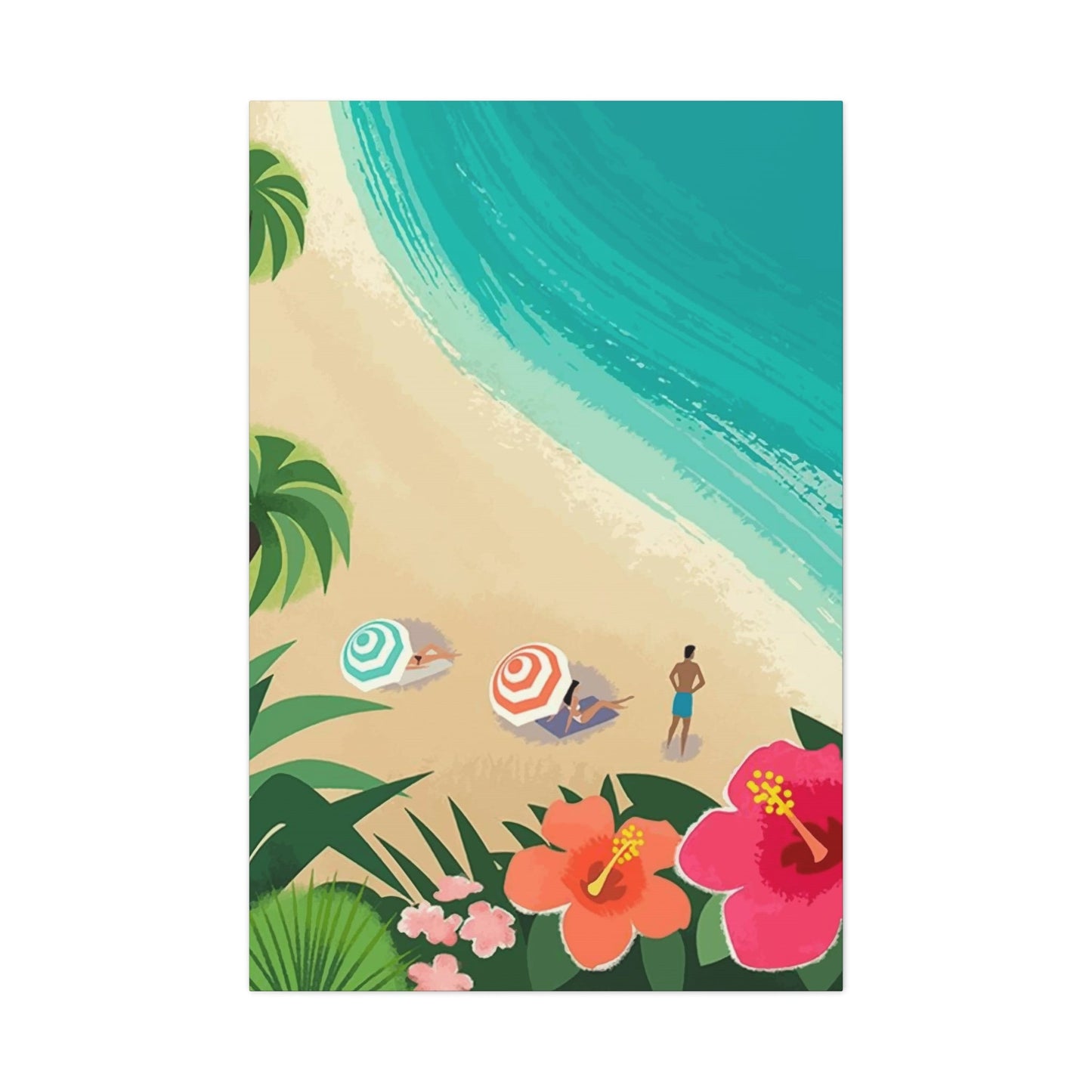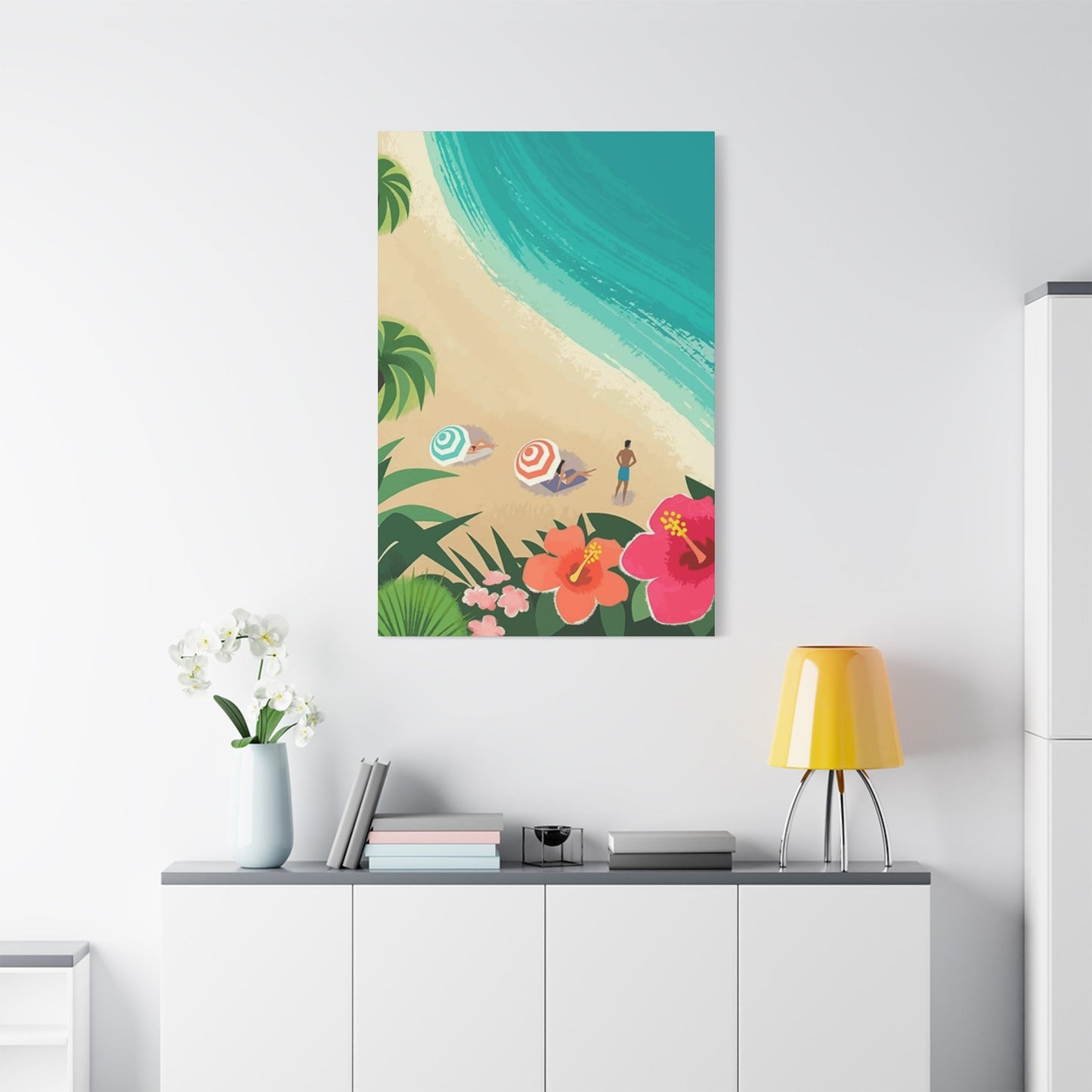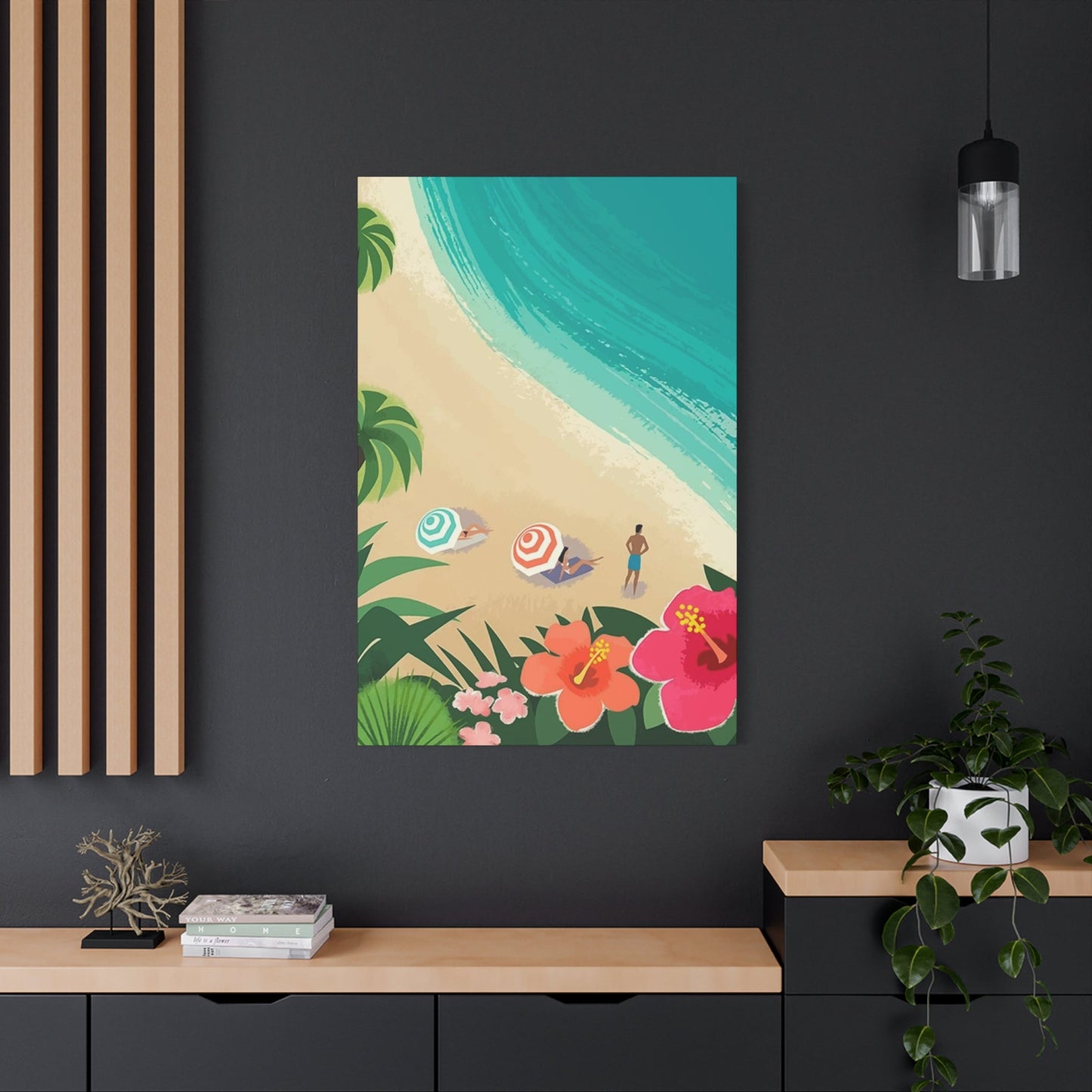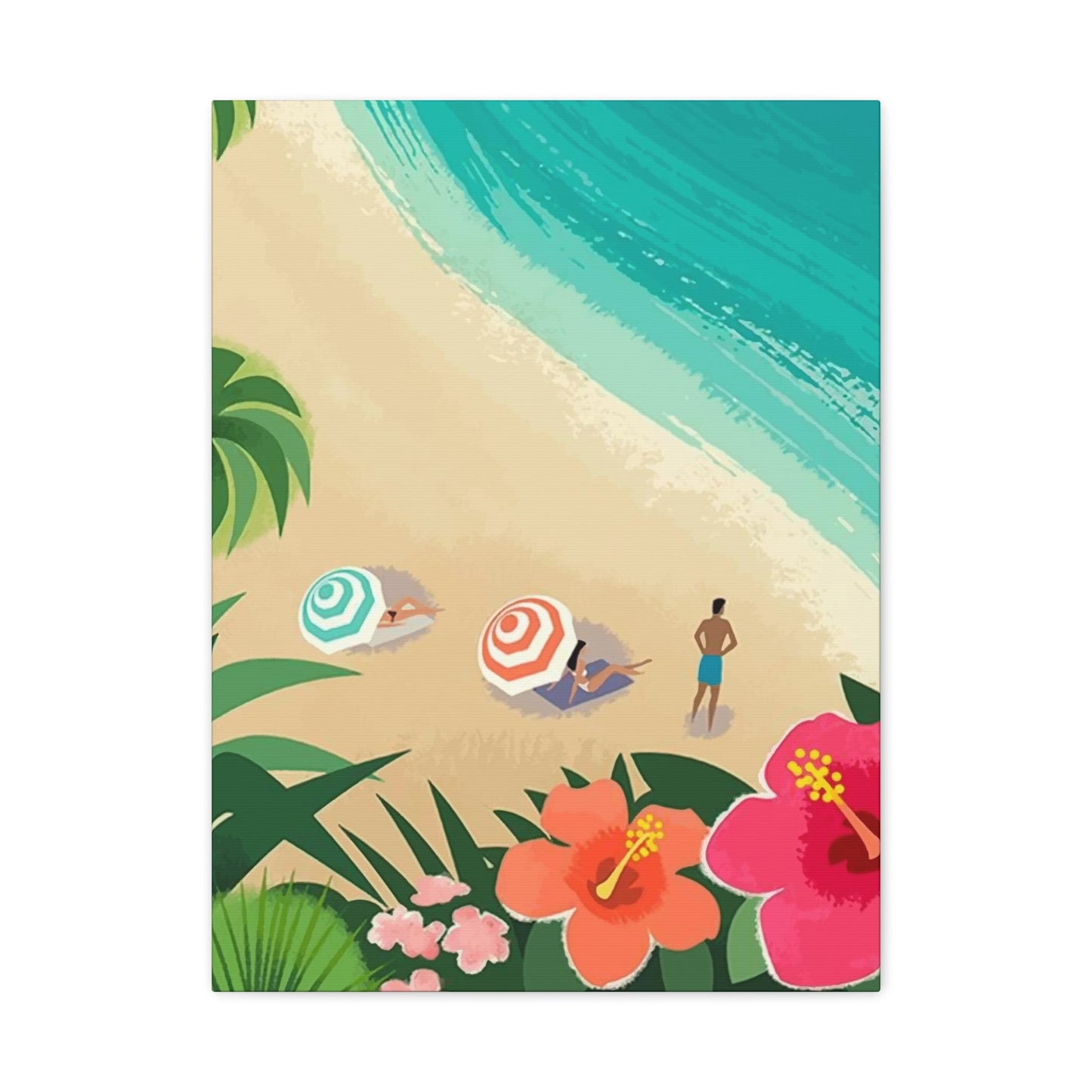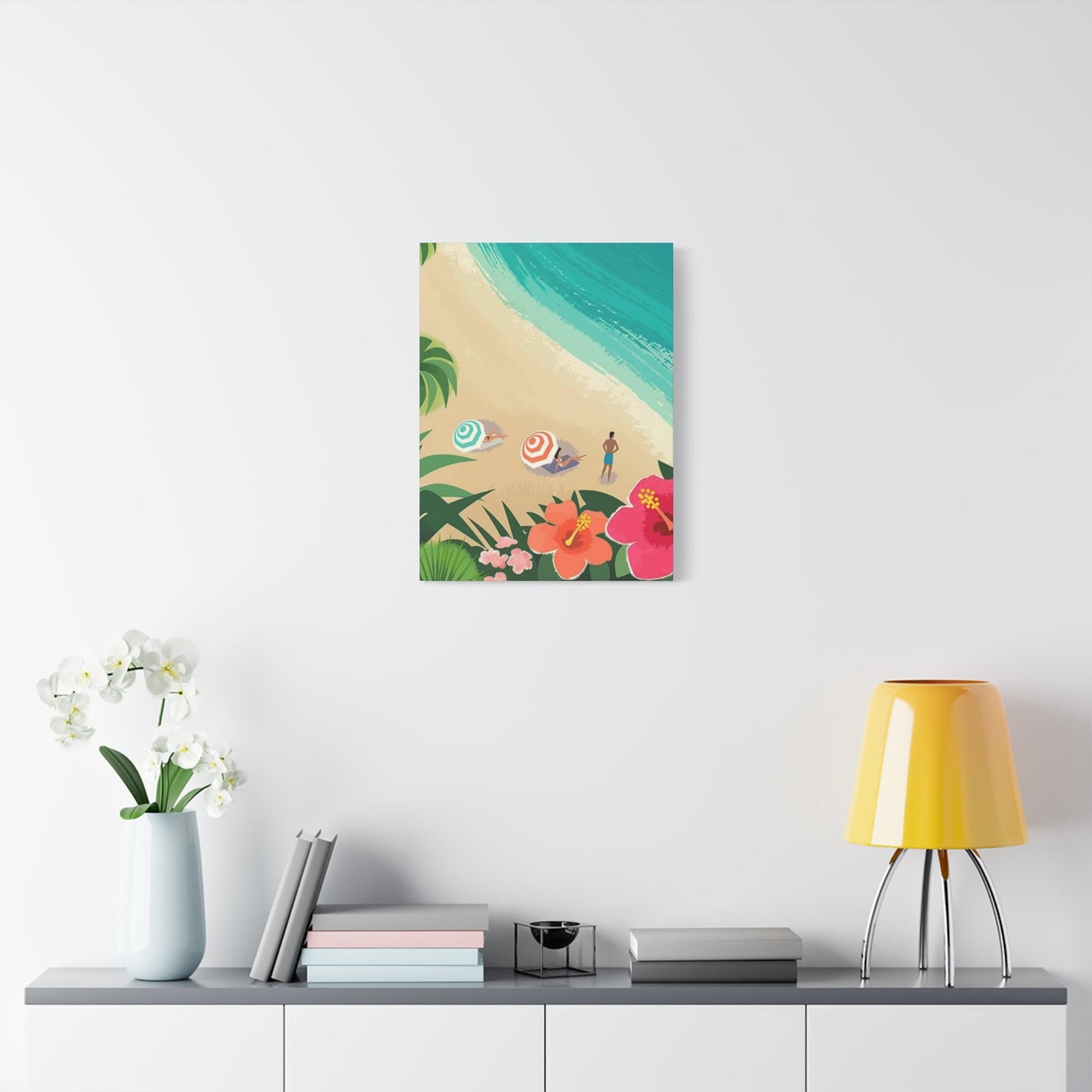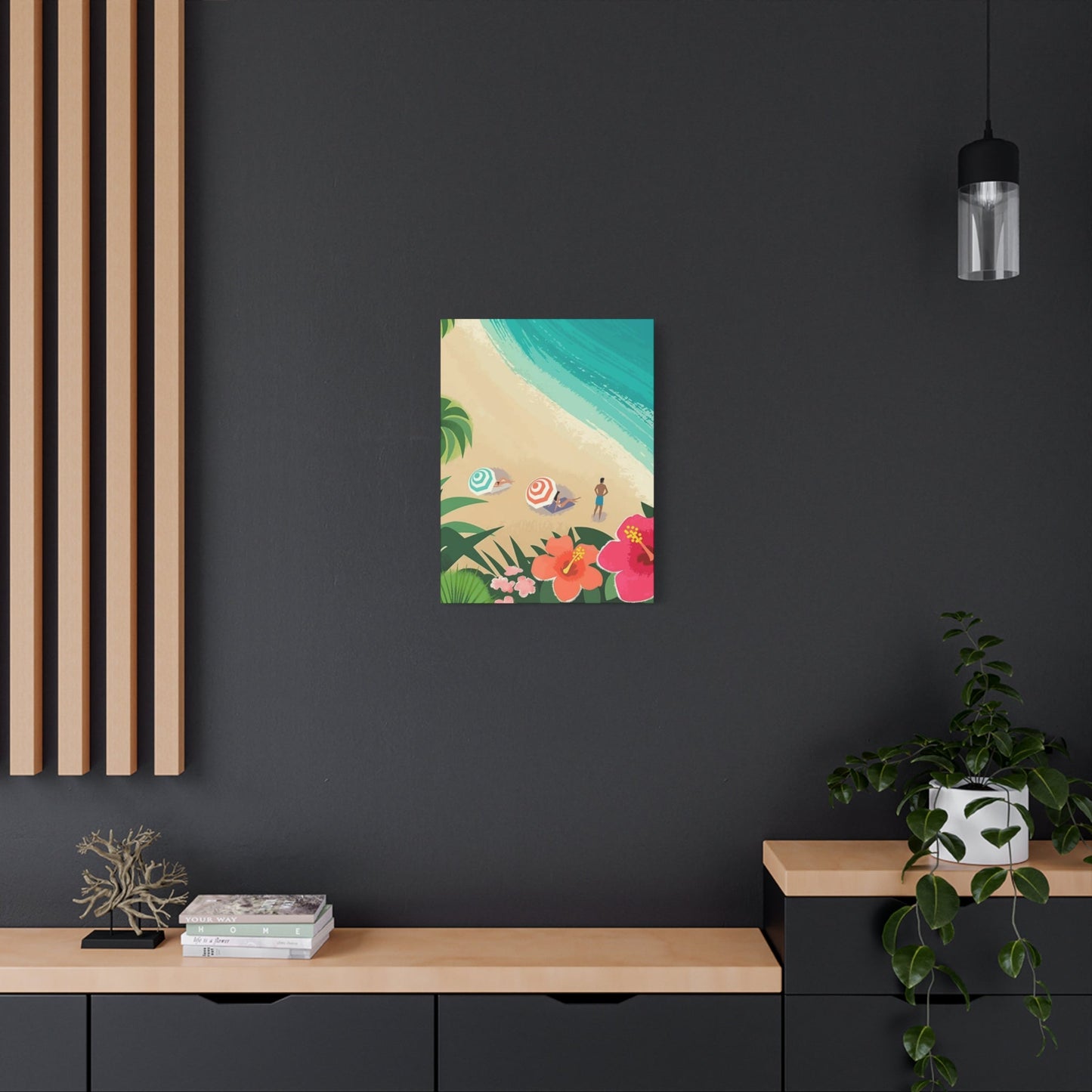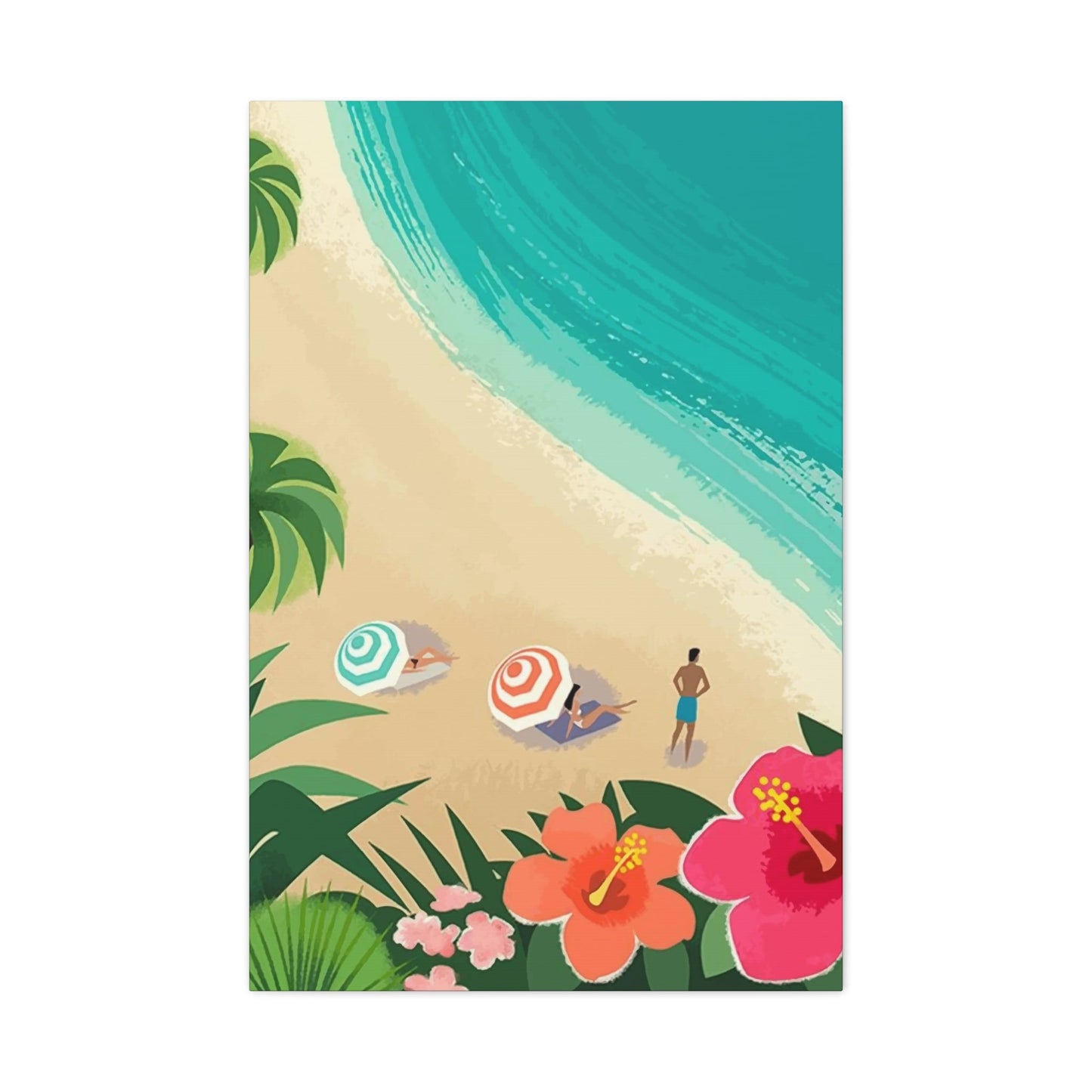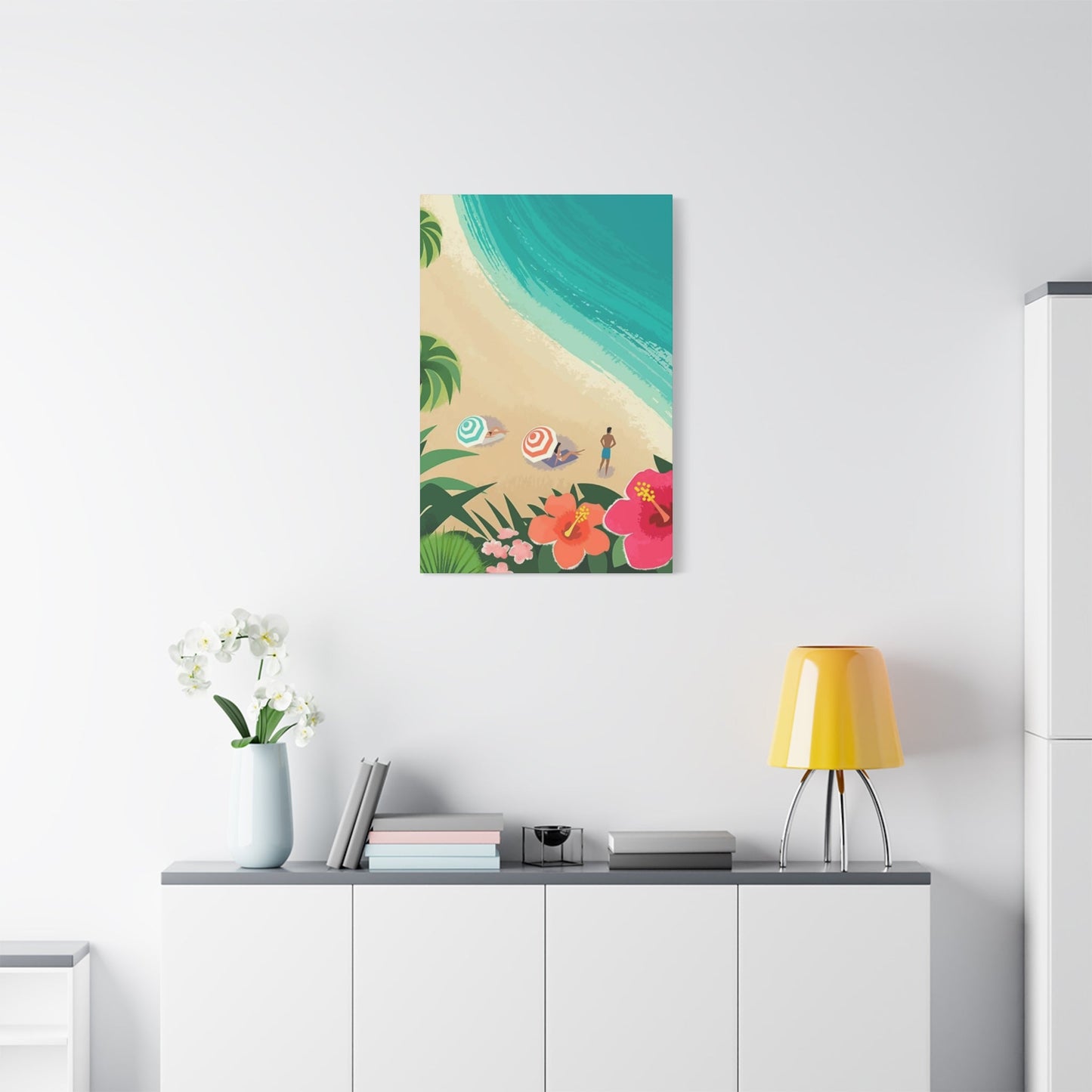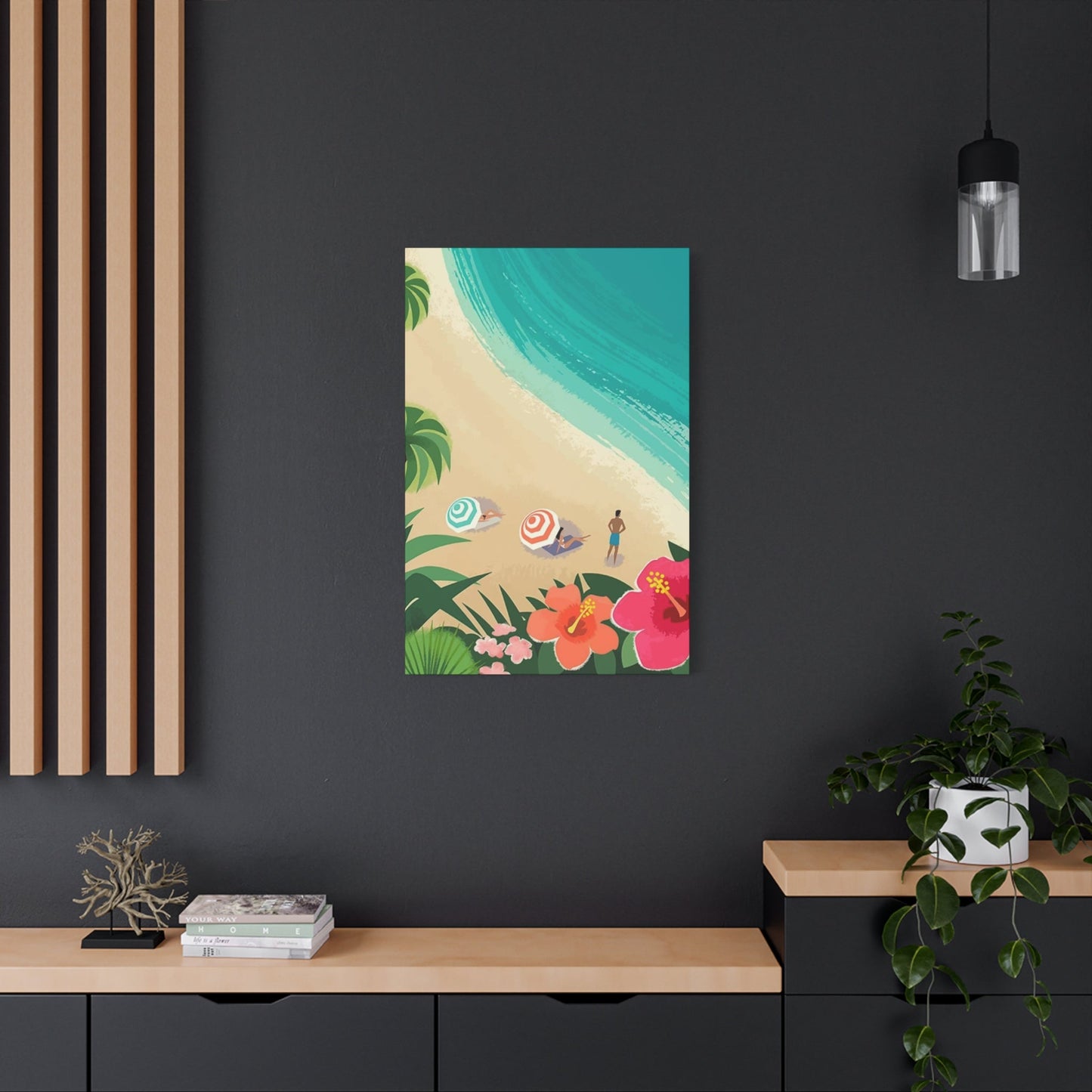Coastal Wall Art: Design Ideas for Ocean-Inspired Interior Spaces
The allure of ocean-inspired interior design has captivated homeowners and designers alike, creating spaces that evoke the tranquil essence of seaside living. Coastal wall art serves as the cornerstone of this aesthetic, offering an accessible pathway to infuse any space with the calming presence of maritime beauty. Whether you reside miles from the nearest coastline or wish to enhance your beachfront property, incorporating oceanic artwork into your interior design scheme can dramatically alter the atmosphere of your living environment.
The growing popularity of coastal decorating stems from our innate connection to water and natural elements. These design choices reflect a desire to create sanctuary-like spaces that promote relaxation and mental well-being. Ocean-themed artwork captures the endless horizon, rolling waves, sandy shores, and marine life that remind us of peaceful moments spent by the water's edge.
Contemporary coastal design has evolved beyond traditional nautical motifs, embracing sophisticated interpretations of seaside aesthetics. Modern coastal wall art encompasses everything from abstract wave patterns to photographic seascapes, allowing for diverse expression within this beloved design theme. The versatility of coastal artwork makes it suitable for various interior styles, from minimalist modern homes to traditional beach cottages.
Incorporating Ocean Elements into Your Living Space
Creating an ocean-inspired atmosphere within your home requires thoughtful consideration of color palettes, textures, and artistic elements that capture the essence of coastal environments. The foundation of successful coastal decorating lies in understanding how different oceanic elements can be represented through wall art to create cohesive, serene living spaces.
Color plays a fundamental role in establishing coastal ambiance. The natural palette of the ocean offers an extensive range of blues, from deep navy representing the depths of the sea to soft powder blue reminiscent of shallow tropical waters. These blues can be complemented by sandy beiges, weathered grays, and crisp whites that mirror the colors found along shorelines. Incorporating these hues through wall art creates an immediate connection to marine environments.
Texture consideration is equally important when selecting coastal artwork. The ocean presents various textural elements, from smooth sea glass to rough driftwood, rippling water surfaces to coarse sand. Wall art that captures these textures through brushstrokes, photographic techniques, or mixed media applications adds depth and authenticity to coastal design schemes.
The subject matter of coastal wall art extends far beyond simple seascapes. Marine life representations, including fish, seahorses, coral formations, and sea turtles, bring vibrant energy to spaces while maintaining the oceanic theme. Coastal landscapes featuring lighthouses, pier structures, beach grass, and rocky coastlines provide architectural interest and storytelling elements that enhance the overall narrative of your space.
Scale and proportion considerations are crucial when planning coastal wall art installations. Large-scale pieces can serve as dramatic focal points, while smaller works can be grouped to create gallery walls that tell comprehensive coastal stories. The key lies in balancing the visual weight of artwork with the proportions of your room and existing furnishings.
Canvas Prints for Coastal Interior Design
Canvas prints have revolutionized the accessibility and affordability of coastal wall art, offering homeowners professional-quality reproductions of oceanic artwork at reasonable price points. The canvas medium provides texture and depth that enhances the visual impact of coastal imagery, creating artwork that rivals traditional paintings in aesthetic appeal.
The durability of modern canvas printing technology makes it ideal for coastal-themed spaces, particularly in homes located near actual coastlines where humidity and salt air can affect artwork longevity. High-quality canvas prints resist fading, moisture damage, and warping, ensuring your coastal wall art maintains its beauty over time. This durability factor makes canvas prints practical choices for bathrooms, kitchens, and other areas where traditional artwork might be vulnerable to environmental conditions.
Canvas printing allows for customization options that traditional artwork cannot match. Homeowners can select specific sizes to fit their spaces perfectly, choose framing options that complement their decor, and even commission custom prints from personal photographs of meaningful coastal locations. This personalization aspect makes canvas prints particularly valuable for creating unique coastal design schemes that reflect individual experiences and preferences.
The variety of coastal imagery available in canvas print format is virtually unlimited. From professional seascape photography capturing dramatic storm clouds over ocean horizons to abstract interpretations of wave movements rendered in flowing brushstrokes, canvas prints offer access to diverse artistic styles and subjects. This variety ensures that every homeowner can find coastal artwork that aligns with their personal taste and existing decor.
Installation flexibility represents another advantage of canvas prints for coastal decorating. Unlike heavy framed artwork, canvas prints are lightweight and can be easily repositioned as design preferences evolve. This adaptability allows for seasonal decorating changes or room rearrangements without the complications associated with heavier traditional artwork.
Designing Peaceful Living Rooms with Ocean-Themed Art
The living room serves as the central gathering space in most homes, making it an ideal location for showcasing coastal wall art that sets the tone for relaxation and social connection. Designing a living room with ocean-themed artwork requires careful consideration of how the art interacts with seating arrangements, lighting conditions, and the room's overall function as both a comfortable retreat and entertaining space.
Focal point creation represents the first step in designing a coastal living room. A large-scale seascape or abstract ocean piece positioned above a sofa or fireplace immediately establishes the room's coastal theme while providing a stunning visual anchor. The artwork should be proportioned to complement the furniture beneath it, typically spanning two-thirds to three-quarters of the sofa's width for optimal visual balance.
Color coordination between coastal wall art and existing furnishings creates harmony within the space. If your living room features neutral furniture, oceanic artwork can introduce color through various shades of blue, turquoise, and sea green. Alternatively, if your seating incorporates coastal colors, artwork can either complement these hues or provide contrast through warmer sand tones or dramatic storm cloud grays.
Lighting considerations significantly impact how coastal wall art appears in living room settings. Natural light from windows can enhance the colors in seascapes and create dynamic viewing experiences as lighting conditions change throughout the day. Artificial lighting should be positioned to minimize glare while providing adequate illumination to appreciate the artwork's details and colors.
Creating conversational groupings around coastal artwork enhances the social function of living rooms while celebrating the oceanic theme. Arranging seating to face or complement the wall art creates natural gathering spaces where guests can appreciate both the artwork and each other's company. This arrangement works particularly well with gallery walls featuring multiple pieces of varying sizes.
Layering elements within the living room design amplifies the coastal theme beyond wall art alone. Incorporating throw pillows in oceanic colors, area rugs with wave patterns, or coffee table accessories like coral specimens creates a cohesive design story that supports and enhances the impact of coastal wall art.
Ocean-Inspired Bedroom Decorating Concepts
Bedrooms offer unique opportunities for incorporating coastal wall art in ways that promote restfulness and create personal sanctuaries inspired by the peaceful qualities of ocean environments. The intimate nature of bedroom spaces allows for more personal and emotionally resonant artwork choices that reflect individual connections to coastal experiences and memories.
Headboard wall treatments using coastal artwork create dramatic focal points while maintaining the serene atmosphere essential for quality sleep. Large-scale seascapes positioned above the bed can create the illusion of waking up to ocean views, while softer, more abstract interpretations of water movements provide subtle oceanic references without overwhelming the space. The key lies in selecting artwork with calming color palettes and gentle imagery that promotes relaxation rather than excitement.
Color psychology plays a crucial role in bedroom coastal design. Blues and blue-greens have been scientifically proven to lower heart rates and promote relaxation, making them ideal choices for bedroom wall art. Softer interpretations of oceanic colors, such as seafoam green, pale aqua, and muted turquoise, create soothing environments that support restful sleep while maintaining the coastal aesthetic.
Scale considerations in bedrooms differ from those in living areas due to the more intimate viewing distances and personal nature of the space. Artwork positioned where it can be viewed from the bed should promote feelings of calm and escape rather than demanding attention or analysis. This might mean choosing softer, more abstract coastal pieces over dramatic storm scenes or highly detailed marine life representations.
Creating gallery walls in bedrooms allows for personal storytelling through coastal artwork collections. Combining family beach photographs with purchased seascapes, shells and sea glass shadow boxes, and small coastal paintings creates deeply personal displays that celebrate individual relationships with ocean environments. These collections can evolve over time as new coastal experiences and artwork discoveries are incorporated.
Complementary decorating elements enhance the impact of coastal bedroom wall art. Bedding in oceanic colors, window treatments that filter light like ocean waves, and accessories like driftwood mirrors or sea glass lamps create comprehensive coastal design schemes that support and amplify the wall art's impact.
Statement Wall Applications for Large Coastal Art
Large-scale coastal wall art has the power to dramatically alter the perception and atmosphere of interior spaces, creating immersive environments that transport viewers to seaside settings. These statement pieces require careful planning and consideration to achieve maximum impact while maintaining harmony within the overall design scheme.
Architectural considerations play a crucial role in successfully incorporating large coastal artwork. High ceilings and expansive wall spaces can accommodate oversized seascapes or multi-panel installations that create panoramic ocean views. These dramatic presentations work particularly well in great rooms, formal dining areas, and master bedrooms where the scale of the space can support such impactful artwork.
The emotional impact of large-scale coastal art cannot be understated. A wall-sized seascape can create the sensation of looking through a window onto the ocean, providing daily escape and stress relief benefits. These pieces often become the most memorable and conversation-worthy elements in home design schemes, creating lasting impressions on residents and guests alike.
Multi-panel installations offer flexibility in creating large-scale coastal displays while accommodating various wall configurations. Triptych arrangements showing progressive sunset scenes over ocean horizons create temporal narratives, while multi-panel abstract wave representations can be configured to fit specific wall dimensions and architectural features.
Framing and installation considerations for large coastal artwork require professional attention to ensure proper support and presentation. The weight and size of these pieces demand appropriate wall anchoring systems, while framing choices can significantly impact the artwork's integration with existing decor. Floating frames often work well with coastal artwork, creating clean presentations that don't compete with the oceanic imagery.
Room proportion balance becomes critical when incorporating large-scale coastal art. The artwork should enhance rather than overwhelm the space, requiring careful consideration of furniture placement, color coordination, and complementary design elements. Large pieces often work best when they serve as the primary focal point, with other room elements supporting rather than competing with the coastal statement.
Enhancing Minimalist Spaces with Coastal Elements
Minimalist interior design and coastal aesthetics share common principles of simplicity, natural elements, and calming atmospheres, making them highly compatible design approaches. Incorporating coastal wall art into minimalist spaces requires careful selection and placement to maintain the clean, uncluttered aesthetic while introducing oceanic elements that enhance rather than complicate the design scheme.
The principle of selective focus becomes paramount when adding coastal art to minimalist interiors. Rather than multiple small pieces, minimalist coastal design typically benefits from single, well-chosen artworks that provide maximum impact with minimal visual complexity. A single large-scale abstract seascape or simplified horizon line can introduce coastal elements while maintaining the clean aesthetic essential to minimalist design.
Color discipline maintains crucial importance in minimalist coastal applications. The natural palette of ocean environments aligns well with minimalist preferences for neutral and naturally derived colors. Subtle blues, grays, and whites drawn from coastal imagery can enhance minimalist color schemes without introducing discord or visual chaos.
Negative space utilization represents a key principle in both minimalist design and effective coastal art presentation. Allowing adequate white space around coastal artwork creates breathing room that enhances both the art's impact and the overall sense of calm associated with both design approaches. This generous spacing mimics the expansive feeling of ocean horizons and open skies.
Texture introduction through coastal wall art can add visual interest to minimalist spaces without compromising their clean aesthetic. Canvas textures, subtle brushwork variations, or the natural grain patterns found in driftwood photography can provide tactile interest while maintaining the simplified visual approach favored in minimalist design.
Integration strategies for coastal art in minimalist spaces focus on seamless incorporation rather than decorative addition. The artwork should feel like an natural extension of the space rather than an applied decoration, achieving harmony between the coastal elements and the minimalist framework.
Blending Ocean Art with Contemporary Home Design
Contemporary home design embraces clean lines, innovative materials, and sophisticated color palettes that can be beautifully enhanced by thoughtfully selected coastal wall art. The key to successful integration lies in choosing oceanic artwork that complements rather than conflicts with contemporary design principles while adding warmth and natural elements to potentially stark modern interiors.
Material harmony between contemporary furnishings and coastal artwork creates cohesive design schemes. Modern homes often feature materials like glass, steel, and concrete that can be complemented by coastal art incorporating similar textures or colors. Photography of weathered pier structures, abstract interpretations of water movements, or minimalist seascapes can bridge the gap between natural oceanic elements and contemporary architectural features.
Color palette coordination ensures that coastal wall art enhances rather than disrupts contemporary design schemes. Modern homes often employ monochromatic or limited color palettes that can be subtly expanded through oceanic blues and greens. The key lies in selecting coastal artwork that introduces these natural colors in sophisticated ways that align with contemporary aesthetic preferences.
Scale relationships between contemporary furnishings and coastal artwork require careful consideration to maintain design balance. Large-scale contemporary furniture often benefits from equally substantial coastal art pieces that can hold their visual weight within the space. Conversely, sleek minimalist furnishings might be better complemented by more subtle coastal art applications.
Technological integration possibilities exist for combining contemporary home features with coastal artwork. Digital display systems can rotate through collections of coastal imagery, while smart lighting systems can be programmed to enhance coastal art viewing at different times of day, mimicking the natural lighting changes experienced in ocean environments.
Style evolution considerations acknowledge that contemporary design continues to develop and change. Selecting coastal artwork with timeless appeal ensures that oceanic elements will remain relevant as contemporary design trends evolve, providing lasting value and continued enjoyment over time.
Budget-Conscious Coastal Decorating Solutions
Creating beautiful coastal interiors does not require substantial financial investment when approached with creativity and strategic planning. Affordable coastal wall art options abound for homeowners seeking to incorporate oceanic elements without exceeding their decorating budgets, proving that stunning coastal design is accessible to everyone regardless of financial constraints.
Print reproductions offer the most cost-effective approach to acquiring coastal wall art, providing access to high-quality oceanic imagery at fraction of original artwork prices. Online printing services and local print shops can produce beautiful coastal prints from digital files, allowing homeowners to select sizes and framing options that fit both their spaces and budgets. This approach enables the creation of custom gallery walls featuring coordinated coastal imagery at very reasonable costs.
DIY artwork creation provides opportunities for personalized coastal decoration while maintaining strict budget controls. Photographing local beaches, lakes, or even backyard water features can provide source material for personal coastal art collections. Simple framing techniques using budget-friendly materials can create professional-looking presentations that rival expensive purchased alternatives.
Thrift store and secondhand discoveries often yield unexpected coastal art treasures at minimal costs. Garage sales, estate sales, and consignment shops frequently feature oceanic artwork, vintage travel posters featuring coastal destinations, and marine-themed prints that can be incorporated into coastal design schemes. The hunt for these discoveries adds an element of adventure to the decorating process while keeping costs minimal.
Seasonal sales and clearance events provide opportunities to acquire quality coastal wall art at reduced prices. Many retailers offer significant discounts on wall art during end-of-season sales, particularly summer clearance events that often feature coastal and beach-themed merchandise. Planning coastal decorating projects around these sales cycles can result in substantial savings.
Creative repurposing of existing materials can generate coastal wall art without any direct purchasing costs. Maps of coastal areas, pages from old marine biology textbooks, vintage postcards from beach destinations, and even children's beach photographs can be matted and framed to create meaningful coastal gallery walls that celebrate personal connections to ocean environments.
Coastal Canvas Prints as Thoughtful Present Ideas
The universal appeal of coastal imagery makes ocean-themed canvas prints excellent gift choices for various occasions and recipients. Whether celebrating housewarming parties, birthdays, holidays, or special achievements, coastal wall art offers emotional resonance and practical utility that recipients can enjoy for years to come.
Personalization opportunities make coastal canvas prints particularly meaningful gifts. Custom prints created from photographs of meaningful coastal locations, family beach vacations, or shared oceanic experiences transform simple wall art into treasured keepsakes. These personalized pieces often become focal points in recipients' homes while serving as constant reminders of special relationships and shared memories.
Recipient consideration ensures gift appropriateness across diverse tastes and living situations. Coastal artwork appeals to broad audiences, from those with existing beach house decor to urban dwellers seeking natural elements in their city homes. The calming qualities of oceanic imagery make coastal prints suitable for various age groups and lifestyle preferences.
Size and format flexibility allows for gift customization based on recipients' living spaces and decorating needs. Small prints work well for apartment dwellers with limited wall space, while larger pieces can make impressive gifts for those with expansive homes. Multiple smaller prints can be combined to create gallery wall gifts that provide decorating flexibility.
Presentation considerations enhance the gift-giving experience. Professional framing services can create ready-to-hang presentations, while rolled canvas prints offer recipients the flexibility to choose their own framing options. Gift certificates for custom coastal print services allow recipients to select their own preferred imagery and sizing options.
Occasion alignment makes coastal canvas prints appropriate for various celebratory events. New home gifts benefit from artwork that helps establish welcoming atmospheres, while retirement gifts can celebrate future leisure time and relaxation goals. Wedding gifts of coastal prints can commemorate honeymoon destinations or shared dreams of seaside living.
Exploring Blue Color Variations in Ocean-Themed Art
The spectrum of blue colors found in ocean environments provides endless opportunities for creating sophisticated coastal design schemes through wall art selection. Understanding how different blue tones interact with interior spaces and existing decor enables homeowners to make informed choices that achieve desired atmospheric effects while maintaining visual harmony.
Psychological effects of various blue tones influence their appropriateness for different rooms and functions. Deep navy blues evoke feelings of sophistication and depth, making them suitable for formal dining rooms and study areas where focused concentration is valued. Lighter azure and cerulean blues promote feelings of openness and tranquility, working well in bedrooms and meditation spaces where relaxation is the primary goal.
Color temperature considerations affect how blue tones appear in different lighting conditions throughout the day. Cool blues maintain their crispness in northern exposures and artificial lighting, while warmer blue-greens can appear more inviting in southern exposures with abundant natural light. Understanding these variations helps in selecting coastal artwork that will look consistent and appealing under various lighting circumstances.
Complementary color relationships expand the decorating possibilities when working with blue-dominant coastal art. Orange and coral accents create vibrant contrasts that can energize spaces, while yellow elements add warmth and sunshine associations. More subtle approaches might incorporate sandy beiges and driftwood grays that naturally occur alongside oceanic blues in coastal environments.
Monochromatic blue schemes using coastal wall art create sophisticated, cohesive interiors that celebrate the full range of oceanic colors. Layering different shades of blue from pale seafoam to deep indigo creates visual depth while maintaining color harmony. These schemes work particularly well in modern and contemporary interiors where color discipline enhances clean design aesthetics.
Accent strategies using blue coastal art allow for bold color introduction without overwhelming existing neutral decor schemes. A single dramatic blue seascape can serve as a room's primary color source, with smaller blue accents throughout the space creating visual connections and design unity. This approach works well for those hesitant to commit to extensive color changes in their homes.
Establishing Tranquil Atmospheres with Seascape Art
The inherent calming qualities of ocean imagery make seascape wall art particularly effective for creating peaceful, stress-reducing environments within homes. Scientific research supports the psychological benefits of viewing natural scenes, particularly water elements, making coastal artwork both decoratively beautiful and therapeutically beneficial for daily living.
Stress reduction benefits of coastal imagery stem from humans' evolutionary connections to water sources and natural environments. Viewing seascapes can lower cortisol levels, reduce blood pressure, and promote the relaxation response that counteracts daily stress accumulation. These benefits make coastal wall art particularly valuable in bedrooms, meditation spaces, and other areas designated for rest and rejuvenation.
Movement and rhythm in seascape artwork contribute to its calming effects. The repetitive patterns of waves, the gentle curves of shorelines, and the flowing movements of water create visual rhythms that can slow heart rates and promote meditative states. Abstract interpretations of these movements can be equally effective while offering more sophisticated artistic presentations.
Horizon line psychology plays a significant role in seascape art's calming effects. The endless horizon represents possibility, freedom, and escape from daily constraints, providing psychological relief even when viewed indoors. Artwork featuring prominent horizon lines can create feelings of spaciousness and openness, particularly valuable in smaller interior spaces.
Natural light integration enhances the calming effects of seascape wall art. Positioning oceanic artwork where natural light can illuminate and interact with the imagery throughout the day creates dynamic viewing experiences that mimic the changing conditions of actual ocean environments. This natural lighting variation prevents the artwork from becoming static decoration, maintaining its ability to capture attention and provide stress relief.
Sound association benefits occur when seascape imagery triggers memories of peaceful ocean sounds like gentle waves and sea breezes. While the artwork itself is silent, many viewers report experiencing auditory memories when viewing compelling seascape pieces, enhancing the overall relaxation benefits and creating more immersive peaceful experiences.
Coastal Art Applications in Dining Room Design
Dining rooms present unique opportunities for incorporating coastal wall art that enhances both the aesthetic appeal and functional aspects of these important gathering spaces. The social nature of dining room activities can be beautifully complemented by oceanic artwork that creates conversation starters while establishing atmospheres conducive to relaxation and enjoyment.
Conversation catalyst potential makes coastal wall art particularly valuable in dining room settings. Interesting seascapes, marine life representations, or abstract oceanic interpretations provide natural discussion topics for dinner guests while creating visually engaging focal points that enhance the overall dining experience. These artworks can spark memories of travel experiences, future vacation plans, or shared appreciation for natural beauty.
Appetite and digestion considerations influence the selection of appropriate coastal artwork for dining rooms. Colors and imagery that promote relaxation and well-being can enhance dining experiences, while overly dramatic or turbulent oceanic scenes might be counterproductive in eating environments. Gentle seascapes, calm harbor scenes, or abstract water representations often work better than storm-tossed seas or dramatic cliff scenes.
Scale and proportion requirements in dining rooms must account for furniture placement and sight lines from seating positions. Artwork positioned where all diners can appreciate it creates inclusive environments, while pieces that can only be viewed from certain seats may create uneven experiences. Gallery walls or multiple smaller pieces can provide viewing opportunities from various angles around the dining table.
Lighting interaction between coastal wall art and dining room fixtures requires careful planning to achieve optimal viewing conditions during different meal times. Natural daylight might showcase the artwork beautifully during breakfast and lunch, while artificial lighting should be positioned to enhance the coastal imagery during evening dining. Adjustable lighting systems can accommodate these varying needs.
Seasonal adaptation possibilities allow coastal dining room art to evolve throughout the year. Summer displays might emphasize bright beach scenes and tropical waters, while winter presentations could feature more dramatic coastal storms or cozy lighthouse scenes. This seasonal rotation keeps the dining room fresh and interesting while maintaining the overall coastal theme.
Professional Workspace Enhancement with Ocean Imagery
The incorporation of coastal wall art in office environments, whether home-based or traditional workplace settings, offers significant benefits for productivity, stress management, and overall job satisfaction. The calming qualities of oceanic imagery can counteract the stress-inducing effects of modern work environments while providing visual relief from computer screens and artificial lighting.
Productivity enhancement through coastal artwork stems from the natural world's proven ability to restore mental focus and reduce cognitive fatigue. Brief visual breaks involving nature imagery, including seascapes, can improve concentration levels and maintain mental clarity throughout long work sessions. This makes coastal wall art a practical investment in professional performance as well as aesthetic enhancement.
Stress management benefits are particularly valuable in office environments where deadline pressures and professional demands create ongoing tension. Coastal imagery provides accessible escape opportunities without leaving the workspace, offering moments of mental restoration that can prevent stress accumulation and maintain emotional equilibrium throughout challenging work periods.
Color psychology applications in professional settings favor the calming blues and greens commonly found in coastal artwork. These colors promote mental clarity and emotional stability while avoiding the aggressive associations of reds or the potentially depressing effects of darker colors. The natural palette of oceanic artwork provides psychological comfort without sacrificing professional appropriateness.
Creativity stimulation through natural imagery can enhance problem-solving abilities and innovative thinking. The organic patterns and movements found in coastal art can inspire new approaches to professional challenges while providing the mental flexibility needed for creative solutions. This makes oceanic artwork particularly valuable for professionals in creative fields or positions requiring innovative thinking.
Client impression considerations make coastal wall art appropriate for professional environments where clients or customers visit. The universal appeal and non-controversial nature of oceanic imagery creates welcoming atmospheres while avoiding potential conflicts with diverse client backgrounds or preferences. This makes coastal art safer choices than more personal or politically charged artistic subjects.
Therapeutic Benefits of Ocean Art in Interior Design
The therapeutic applications of coastal wall art extend beyond simple decoration, offering genuine mental health and wellness benefits that can improve daily living experiences. Understanding these therapeutic aspects helps homeowners make more intentional choices about incorporating oceanic imagery into their interior design schemes for maximum psychological benefit.
Biophilic design principles explain the human need for connection with natural elements, including ocean environments. Coastal wall art satisfies this biological need for nature contact, even when physical access to coastal areas is limited. This connection can improve mood, reduce anxiety, and promote overall psychological well-being through regular exposure to natural imagery within living spaces.
Meditation and mindfulness practices can be enhanced by coastal wall art that provides focal points for contemplative activities. The repetitive patterns of waves, the vastness of ocean horizons, and the flowing movements of water create ideal subjects for meditation practice while serving as beautiful room decorations. This dual function maximizes the value and utility of coastal artwork investments.
Sleep improvement potential exists when coastal artwork is thoughtfully incorporated into bedroom design. The calming colors and peaceful imagery associated with ocean scenes can promote relaxation and prepare the mind for restful sleep. This is particularly valuable for individuals who experience stress-related sleep difficulties or live in urban environments lacking natural tranquility.
Seasonal affective disorder mitigation may benefit from coastal artwork that evokes memories of sunny beach days and outdoor activities. During dark winter months, bright coastal scenes can provide psychological reminders of warmth and light, potentially alleviating some symptoms of seasonal depression while maintaining year-round decorative appeal.
Memory and nostalgia activation through coastal art can provide ongoing psychological benefits for individuals with meaningful ocean experiences. Artwork that reminds viewers of happy beach vacations, childhood coastal adventures, or peaceful seaside moments can trigger positive emotional responses that improve mood and provide comfort during difficult times.
Maximizing Impact in Compact Living Areas
Small living spaces present unique challenges and opportunities for incorporating coastal wall art effectively. Limited wall space demands strategic selection and placement of oceanic artwork to achieve maximum visual impact while maintaining the functionality and flow essential in compact environments.
Vertical space utilization becomes crucial in small rooms where floor space is at a premium. Tall, narrow coastal prints or vertical gallery wall arrangements can draw the eye upward, creating illusions of height while providing opportunities for oceanic artwork display. This approach maximizes wall art impact without consuming precious horizontal space needed for furniture and movement.
Light reflection and enhancement properties of certain coastal artwork can help brighten small spaces while introducing oceanic themes. Artwork featuring water reflections, bright beach scenes, or light-colored seascapes can help distribute available natural light throughout compact rooms, making them feel larger and more open while maintaining coastal design aesthetics.
Multi-functional approaches to coastal art in small spaces might include artwork that serves additional purposes beyond decoration. Mirrors with coastal frames provide both oceanic styling and space-enhancing reflection, while coastal art that incorporates storage elements or serves as room dividers maximizes functionality within limited square footage.
Color strategy for small space coastal design should emphasize lighter, brighter tones that help rooms feel more spacious. Pale blues, soft aquas, and sandy beiges drawn from coastal imagery can make compact rooms feel larger while maintaining the desired oceanic atmosphere. Darker coastal colors might be used sparingly as accent elements rather than dominant themes.
Proportion adjustment techniques ensure that coastal artwork enhances rather than overwhelms small living spaces. Multiple smaller pieces might work better than single large statements, while careful spacing between artworks prevents visual crowding. The goal is creating coastal atmosphere while maintaining the sense of openness essential in compact living environments.
Artistic Style Variations in Coastal Wall Art
The diversity of artistic approaches to coastal imagery provides homeowners with extensive options for expressing personal taste while maintaining oceanic themes. Understanding different artistic styles helps in selecting coastal wall art that aligns with existing decor preferences and achieves desired atmospheric effects within specific interior design contexts.
Photographic realism in coastal art captures the precise details and colors of actual ocean environments, providing viewers with accurate representations of seaside beauty. These pieces work well for those who appreciate documentary approaches to nature art or wish to commemorate specific coastal locations through detailed imagery. High-quality photographic prints can rival traditional paintings in visual impact while offering advantages in cost and customization options.
Abstract interpretations of oceanic themes allow for more flexible integration with various interior design styles while maintaining coastal references. Abstract coastal art might emphasize the colors, movements, or emotional qualities of ocean environments without literal representation, providing sophisticated artistic statements that complement contemporary and modern interior designs while avoiding potentially limiting literal imagery.
Impressionistic coastal paintings capture the essence and atmosphere of ocean environments through loose brushwork and emphasis on light effects. These pieces often evoke emotional responses to seaside experiences rather than documenting specific locations, making them suitable for creating romantic or nostalgic coastal atmospheres within interior spaces. The artistic quality of impressionistic work can elevate coastal design schemes beyond simple beach house decoration.
Contemporary graphic approaches to coastal art might incorporate geometric interpretations of wave patterns, minimalist representations of horizons, or stylized marine life imagery. These modern artistic approaches can successfully bridge the gap between natural oceanic themes and sophisticated contemporary interior design, offering coastal references that align with current artistic trends and aesthetic preferences.
Mixed media coastal artwork combines various materials and techniques to create textural, three-dimensional pieces that add physical depth to wall displays. These might incorporate actual sand, shells, driftwood, or sea glass along with traditional artistic media, creating pieces that engage multiple senses while providing authentic coastal material connections within interior spaces.
Developing Comprehensive Coastal Art Collections
Creating cohesive coastal wall art collections requires thoughtful planning and gradual acquisition strategies that result in unified design statements while allowing for personal expression and evolution over time. Successful coastal art collections tell stories, reflect personal experiences, and create harmonious relationships between individual pieces and overall interior design schemes.
Thematic coherence within coastal art collections might focus on specific aspects of ocean environments, such as marine life, seascapes, coastal architecture, or abstract water interpretations. This focused approach creates stronger visual impact while allowing for variety within the chosen theme. Alternatively, collections might celebrate specific geographical regions or combine various coastal elements to create comprehensive oceanic narratives.
Scale variation within coastal art collections prevents visual monotony while accommodating different wall spaces and viewing distances. Combining large statement pieces with smaller supporting artworks creates dynamic displays that maintain viewer interest while providing flexibility for various room configurations. This approach also allows for budget-conscious collection building through gradual acquisition of pieces in different price ranges.
Color coordination strategies ensure that coastal art collections enhance rather than conflict with existing interior design elements. Collections might focus on specific color families drawn from oceanic imagery, or incorporate varied coastal colors that provide flexibility for different room applications. The key lies in maintaining enough color consistency to create visual harmony while allowing sufficient variety to prevent monotony.
Acquisition timeline planning allows coastal art collections to develop gradually while maintaining budget control and ensuring thoughtful selection processes. This approach prevents impulsive purchases that might not integrate well with existing pieces while allowing time to discover unique artworks that truly enhance the collection's overall impact and personal meaning.
Display evolution strategies acknowledge that coastal art collections will change and grow over time. Planning display systems that can accommodate new additions, seasonal rotations, or rearrangements ensures that collections remain fresh and engaging while adapting to changing personal preferences and life circumstances.
Integrating Maritime Elements with Beach House Aesthetics
The combination of coastal wall art with traditional nautical design elements creates rich, layered interior design schemes that celebrate comprehensive maritime aesthetics. This integration approach allows for more complex and interesting coastal design narratives while providing opportunities to incorporate family maritime heritage or personal boating experiences into home decorating schemes.
Nautical color palette coordination between coastal wall art and maritime accessories requires careful balance to avoid overwhelming rooms with too much oceanic theming. Traditional nautical colors like navy blue, white, and red can be balanced with softer coastal tones drawn from wall art imagery, creating sophisticated color schemes that reference both maritime tradition and natural ocean environments.
Scale relationship management becomes important when combining large coastal artwork with smaller nautical accessories like ship models, compass roses, or marine hardware. The visual weight of different elements should be balanced to create harmonious compositions where neither the wall art nor the accessories dominate the overall design scheme. This often involves using coastal art as primary focal points with nautical elements serving as supporting details.
Historical context considerations might influence the selection of both coastal artwork and nautical accessories to create historically coherent design themes. Vintage maritime charts, historical ship photography, or period-appropriate nautical instruments can be combined with coastal art that reflects similar time periods or geographical regions, creating educational and decorative displays that tell historical stories.
Authenticity balance ensures that maritime-themed rooms feel genuine rather than overly contrived or theme-park-like. Incorporating real nautical elements with quality coastal artwork while avoiding excessive rope, anchor, and ship wheel motifs creates sophisticated maritime environments that feel lived-in and personal rather than artificially themed.
Seasonal adaptation possibilities allow maritime-themed rooms to evolve throughout the year while maintaining their nautical character. Summer displays might emphasize bright coastal scenes and sailing imagery, while winter presentations could focus on more dramatic seascapes and cozy lighthouse themes, keeping maritime interiors fresh and seasonally appropriate.
Conclusion
The integration of coastal wall art into interior design represents far more than simple decoration; it serves as a transformative tool that fosters calm, inspiration, and a profound connection to the natural world. Throughout this exploration, we have discovered the multifaceted ways in which ocean-inspired artwork can influence mood, elevate aesthetics, and create living spaces that feel both serene and engaging. Coastal wall art, whether in the form of canvas prints, paintings, metal sculptures, or mixed-media pieces, captures the essence of the sea—the ebb and flow of tides, the shimmer of sunlight on water, and the rhythmic harmony of waves crashing along the shore. These visual narratives transport viewers into the tranquility and beauty of coastal environments, allowing interiors to reflect not only style but also emotion and mindfulness.
The appeal of coastal wall art lies in its ability to merge realism, abstraction, and imaginative interpretation. Artists skillfully capture the subtle interplay of light, color, and texture, from the gentle gradient of a morning sunrise to the vivid hues of sunset over the horizon. Soft blues, sandy neutrals, and muted greens imbue spaces with calming energy, while more vibrant depictions of ocean life or dramatic seascapes add depth and visual interest. By thoughtfully selecting pieces, homeowners can tailor their interiors to evoke feelings of relaxation, contemplation, or inspiration, effectively turning walls into personal sanctuaries that celebrate both nature and artistry.
Beyond aesthetics, coastal wall art carries symbolic and emotional significance. Oceans often represent renewal, freedom, and resilience, reminding us of the natural cycles of life and the importance of balance and reflection. Incorporating these pieces into living spaces enhances emotional well-being, reduces stress, and encourages mindful interaction with the surrounding environment. Each artwork becomes a narrative element, telling stories of distant shores, adventures, and the timeless beauty of marine landscapes, enriching the atmosphere with personality and meaning.
From a design perspective, coastal wall art is incredibly versatile. Large-format canvases make dramatic statements in living rooms or dining areas, while smaller prints, sculptures, or gallery walls accentuate bedrooms, hallways, or workspaces. The art harmonizes with contemporary, coastal, rustic, and eclectic interiors, offering flexibility while maintaining visual cohesion and impact.
Ultimately, coastal wall art is more than decorative—it is an experience, a bridge between interior spaces and the soothing, inspiring world of the ocean. By thoughtfully integrating these pieces, individuals can create environments that are aesthetically pleasing, emotionally restorative, and deeply connected to the enduring charm and majesty of coastal landscapes.













